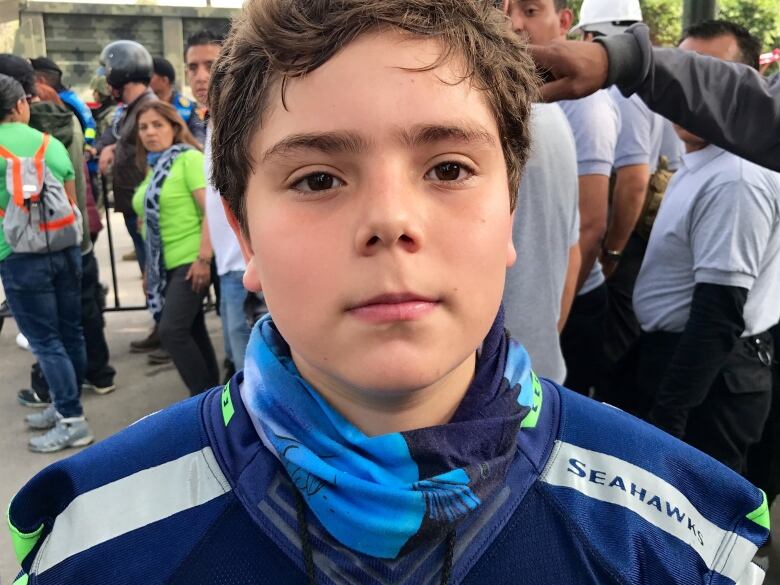Parents hope against hope their children don't appear on grim list of dead in Mexico City
'Brutal' day continues as rescuers dig and listen for youngsters trapped in the rubble

Colegio Enrique Rebsamen school has become the epicentre of Mexico City's grief. Frantic rescuers know there are kids trapped in the small dark spaces they can't yet reach.
When the 7.1 magnitude earthquake hit Tuesday, killing more than 200 people and counting, the school in the southern part of Mexico City collapsed.
In the immediate aftermath, rescuers were able to pull several children out alive. Now, more than 24 hours later, they're still digging and hoping.
"Of course!" says 12-year-old Sebastian Castaneda, who says he came to help "break rocks."
"These school kids, they're my friends."

So many people want to help, officials have to turn volunteers away. But Alejandro Meza offered to do the job nobody wants — he's the keeper of the lists.
Anxious parents head his way, gripping each other tightly, to find out which list their child is on: Hospital Angeles (the hospital list) or Fallecidos (the list of those who have passed away).
"Yes it's brutal, brutal," Meza says. "Talking to the parents of the kids, I'm absolutely devastated. It's brutal."
His morning wasn't much better. He spent it helping the diggers. On his watch, they found two more young bodies. Another call to the men in the blue gloves. The van carrying local coroners arrived and was slowly admitted past the metal gate erected to guard the site.

Meanwhile, Raquel Guillen checks the list of the dead. There are dozens of names and she knows so many of them. But, thank God, she says, they don't include her 10-year-old son Carlos, who escaped the building twice.
"The stairs collapsed," she says, "but he was able to get out the emergency exit. Then he heard a friend was trapped in a chair, so he went back to rescue him."

Most of the victims, Meza says, were around seven years old, because it was the first- and second-grade classroom area that was crumpled and folded most severely.
The workers continue to dig and listen.
"When I came out about 20 minutes ago," Meza says, "they were asking for quiet because they thought they heard noises."
So they send in the sniffer dogs and the "topos" (moles), specialist volunteers like Hector Mendez who travel around the world to break through walls and squeeze through holes to reach those others can't.

"We work with our heart, and our will, to recover these babies," he says. "That's why we are topos Aztecas, cabron!"
Incredibly, after hours of hope and despair, in the afternoon, rescuers find a girl alive under the school more than a day after it collapsed around her.
So, the call goes out for more hard hats, more ladders, more pickaxes.
Mendez and the rest of the moles will dig with tools if they have them, their hands if they don't, until the last voices fade.


